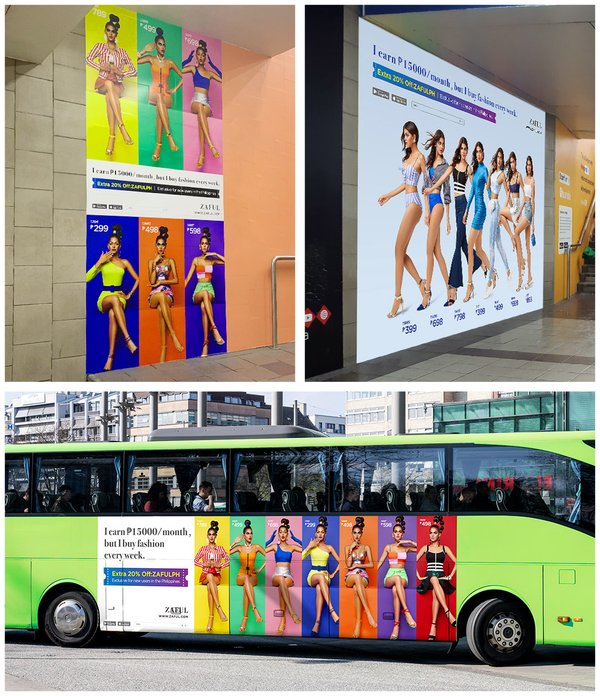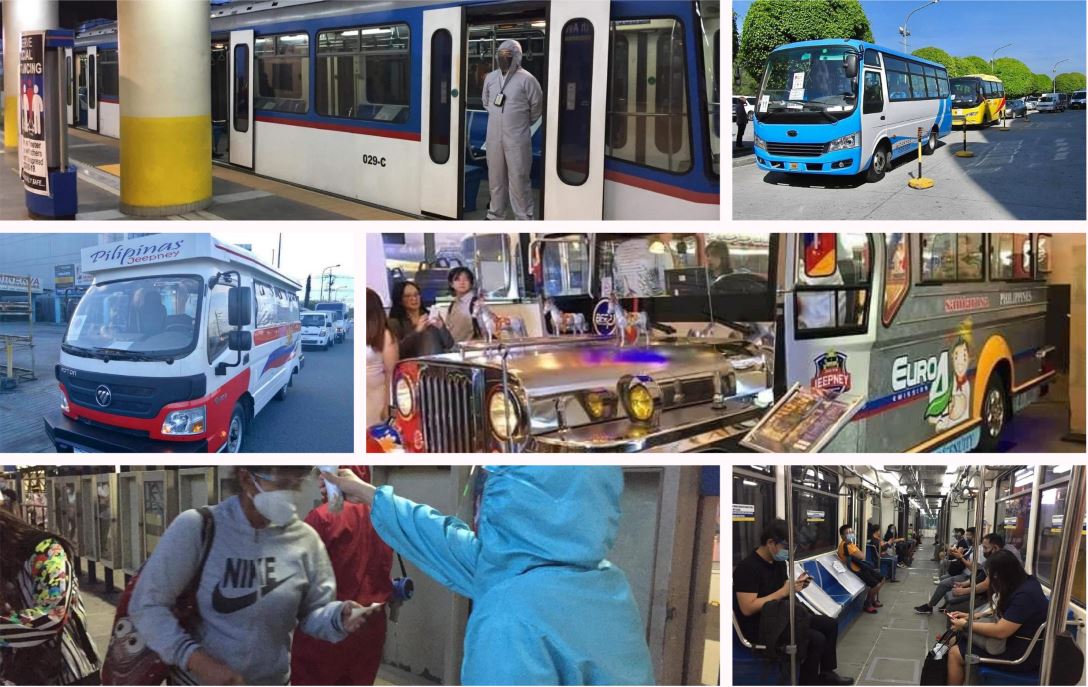Why Pick Transit Advertising Philippines for Your Brand
Exactly How Transportation Advertising And Marketing Can Change Mass Transit Spaces Into Dynamic Advertising Platforms
Transportation advertising and marketing holds considerable potential to redefine mass transit spaces into dynamic marketing platforms that inform and involve. By using ingenious formats such as interactive kiosks and digital displays, brand names can not only get to a varied target market yet likewise boost the total commuter experience. This strategy develops a special opportunity for brand names to get in touch with consumers in a setup that is frequently ignored. As we discover the complex advantages and advancing techniques of transit advertising and marketing, it increases the question of just how this transformation can redefine our interactions with both brands and the city atmosphere.
Advantages of Transit Advertising And Marketing

In addition, transit advertising is very cost-efficient contrasted to conventional media. It enables advertisers to achieve high perceptions at reduced costs, taking full advantage of roi. The captive target market of commuters supplies a chance for brands to convey their messages to individuals who are often receptive throughout their travel times.
Moreover, the dynamic nature of transportation advertising and marketing permits campaigns to be upgraded frequently, making sure that messaging continues to be pertinent and timely. This versatility can be essential in responding to market fads or marketing occasions, maintaining the brand name top-of-mind for customers. Last but not least, the prevalent existence of transportation advertising adds to brand name recall; repeated direct exposure within acquainted traveling contexts reinforces brand name awareness and cultivates consumer loyalty, inevitably enhancing and driving sales brand name track record.
Sorts Of Transportation Advertising And Marketing
Mass transit systems give different styles for marketing, each satisfying various advertising techniques and audience engagement approaches. One noticeable type is outside bus and train covers, which cover the entire car and produce a mobile billboard impact, enabling high presence in city settings. These covers can capture focus as they go across busy streets, getting to a varied audience.
Another popular layout is interior marketing, which includes posters, electronic screens, and ads on transportation seats. These positionings engage guests during their journey, reinforcing brand messaging in a confined area. Digital displays, specifically, supply the advantage of vibrant content, making it possible for marketers to update messages in real-time.
Station advertising and marketing is likewise significant, including posters, banners, and interactive stands within transit terminals. These advertisements leverage foot traffic and can target specific demographics based upon place.
Last but not least, marketing collaborations with transportation authorities can bring about unique campaigns, such as themed transportation experiences or occasions, enhancing the overall involvement with travelers. Each kind of transportation advertising and marketing offers distinct advantages, enabling brands to tailor their method to properly reach their target audience within the general public transport environment.
Involving Commuters Successfully
Travelers are increasingly flooded with advertising and marketing messages during their everyday travels, making it vital for brand names to engage them in cutting-edge methods. To record interest in this congested room, advertisers have to prioritize creativity and importance. Making use of appealing visuals and succinct messaging can dramatically enhance the possibility of engagement.
Interactive components, such as QR codes or augmented fact attributes, can also transform fixed advertisements right into immersive experiences, cultivating a deeper connection with the audience. Brands should concentrate on attending to commuters' demands and interests, tailoring messages to resonate with their way of life, whether through promotions for local companies or services made to improve their commuting experience.
In addition, timing plays an essential duty; strategically placing ads during optimal travelling hours can take full advantage of exposure and effect. Involving travelers effectively also entails leveraging social media integration, allowing travelers to share their experiences or promos directly from transit systems, thus magnifying brand name reach.
Basically, efficient interaction rests on understanding the traveler trip and developing engaging, interactive, and pertinent marketing experiences that not only record focus however likewise drive action and commitment. By doing so, brand names can transform public transport right into a dynamic marketing platform that reverberates with its audience.

Measuring Advertising And Marketing Impact
Exactly how can brand names properly examine the performance of their ad campaign en route atmospheres? Gauging Going Here the influence of transit advertising and marketing needs a multifaceted technique that integrates measurable and qualitative metrics. One prevalent technique is tracking interaction through mobile analytics, where brands can examine foot web traffic patterns and application interactions previously, throughout, and after projects.
Surveys can offer beneficial insights into brand recall and consumer view, enabling brand names to gauge exactly how well their messages reverberate with commuters. Furthermore, monitoring social media engagement relevant to details projects can disclose changes in public assumption and brand name conversation.

In addition, working together with transportation companies can enhance measurement precision, as they typically possess detailed group data on ridership patterns. By integrating these techniques, brands can establish a comprehensive understanding of their marketing site web effectiveness, making sure that their campaigns not just get to yet additionally influence their target market efficiently.
Future Fads en route Advertising
A considerable shift is expected en route advertising and marketing as technological advancements and changing customer actions improve the landscape. Transit Advertising Philippines. The integration of interactive media and electronic displays is expected to boost interaction, permitting brands to deliver dynamic web content that resonates with diverse audiences. As mass transit systems welcome wise technology, marketers will utilize real-time data analytics more helpful hints to customize messages based on guest demographics and habits
Furthermore, enhanced truth (AR) is poised to change the method commuters engage with ads. By offering immersive experiences, AR can change a mundane trip into an interesting narrative that catches interest and fosters brand name commitment. This innovation will likely encourage advertisers to create even more experiential campaigns that drive customer interaction.
Sustainability is an additional critical fad influencing transportation advertising. As environmental awareness grows, brands will progressively look for to align with eco-friendly practices, making use of lasting materials and advertising environment-friendly efforts within their projects.
Conclusion
To conclude, transit advertising and marketing uses considerable benefits by enhancing brand exposure and involving a captive audience. Through numerous styles, such as exterior covers and electronic screens, it changes public transport right into a lively marketing system. Effective involvement techniques and durable measurement methods better magnify its effect. As patterns develop, the capacity for cutting-edge communications in between travelers and brand names is positioned to grow, ensuring that transit advertising remains an important component of modern advertising approaches.
Transit advertising holds significant possibility to redefine public transportation spaces into vibrant advertising systems that engage and notify. The pervasive presence of transportation marketing contributes to brand name recall; repeated exposure within familiar travel contexts strengthens brand understanding and cultivates customer loyalty, inevitably driving sales and boosting brand online reputation.
Just how can brand names precisely analyze the efficiency of their marketing projects in transit settings?In final thought, transportation marketing provides significant advantages by enhancing brand name presence and involving a restricted audience. Transit Advertising Philippines. As trends evolve, the possibility for cutting-edge communications in between brands and commuters is poised to grow, guaranteeing that transportation advertising remains an important element of modern-day advertising and marketing methods